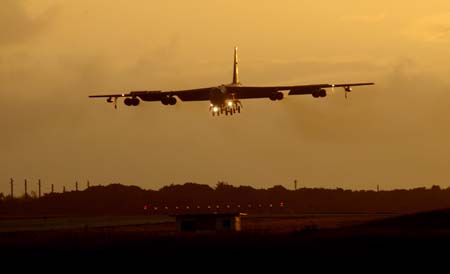The Air Force yesterday pub lished a new version of its nuclear operations doctrine that supersedes the previous iteration from July 1998. One of the most significant changes reflected in Air Force Doctrine Document 2-12, as the new document is known, is the alignment of nuclear operations with the current global environment and away from a Cold War stance, according to the release from Air University’s LeMay Center for Doctrine Development and Education at Maxwell AFB, Ala. “Our nuclear capabilities integrate with a variety of conventional air, space, and cyber capabilities to dissuade and deter potential adversaries,” said Gen. Norton Schwartz, Air Force Chief of Staff, in the release. The doctrine also includes a new chapter that aggregates existing material on safety and security and expands the discussion and emphasis on nuclear surety. “Nuclear operations remain essential and credible elements of national security because of Air Force precision and reliability,” said Schwartz. The new doctrine is one of the numerous activities that the Air Force has undertaken to reinvigorate the nuclear mission, including a new Air Staff A10 office, nuclear-centric major command, and nuclear-oriented bomber rotation. (For more, read The Nuclear Force Revival from the February issue of Air Force Magazine.)
lished a new version of its nuclear operations doctrine that supersedes the previous iteration from July 1998. One of the most significant changes reflected in Air Force Doctrine Document 2-12, as the new document is known, is the alignment of nuclear operations with the current global environment and away from a Cold War stance, according to the release from Air University’s LeMay Center for Doctrine Development and Education at Maxwell AFB, Ala. “Our nuclear capabilities integrate with a variety of conventional air, space, and cyber capabilities to dissuade and deter potential adversaries,” said Gen. Norton Schwartz, Air Force Chief of Staff, in the release. The doctrine also includes a new chapter that aggregates existing material on safety and security and expands the discussion and emphasis on nuclear surety. “Nuclear operations remain essential and credible elements of national security because of Air Force precision and reliability,” said Schwartz. The new doctrine is one of the numerous activities that the Air Force has undertaken to reinvigorate the nuclear mission, including a new Air Staff A10 office, nuclear-centric major command, and nuclear-oriented bomber rotation. (For more, read The Nuclear Force Revival from the February issue of Air Force Magazine.)
Lt. Gen. Stephen L. Davis, the Department of the Air Force’s top internal watchdog, has been nominated to lead Air Force Global Strike Command, which oversees the service’s bombers and intercontinental ballistic missiles.